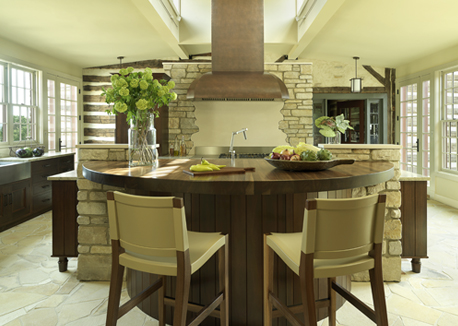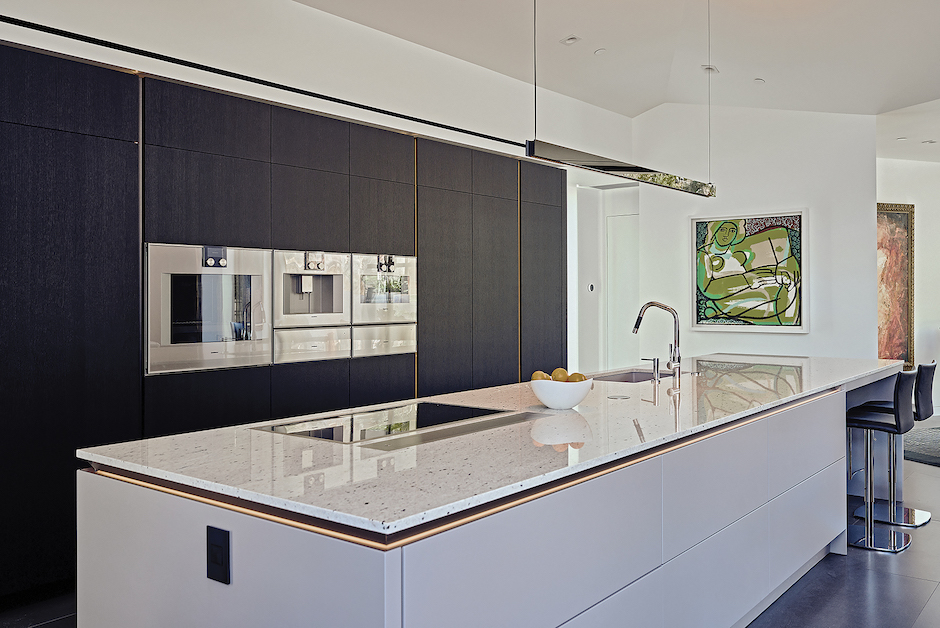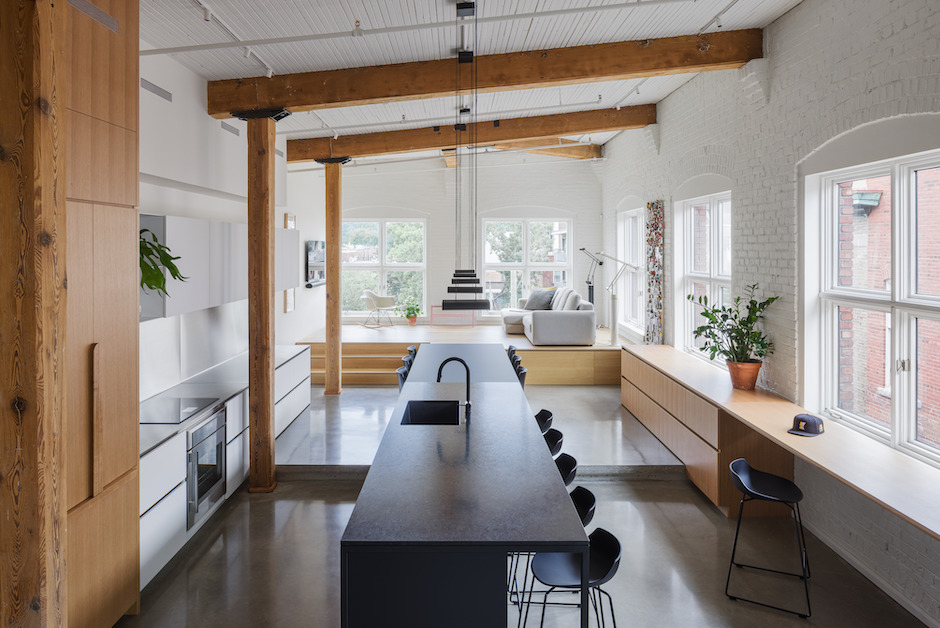
March 8, 2012
This addition to a historic 1820s log cabin in St. Louis was more than just a kitchen remodel. It was an entirely new house added on to a very old structure. When the current homeowners purchased the property, they decided to tear down what had been an add-on to the log cabin that just wasn’t working. It tried too hard to match the style of the cabin, and in so doing, blended the rooflines and blurred the boundary between new and old.
This time around, the extension would strive to complement, not copy, the original architecture. For Chris Berry, ASID, design director of brooksBerry Kitchens & Baths, the project would be the third kitchen collaboration with the clients, who hired her even before an architect was brought on board, thus ensuring the remodel would appear integral to the home. “We were in from day one,” said Berry. “That was the fun part.”
Designed to only lightly touch the original cabin, the addition extends from it in a Y-shaped floor plan where the existing home itself sits in the lower part of the base, while the kitchen forms the upper part. The master suite is located on the left branch of the “Y,” and the breakfast room, laundry room and guest rooms make up the right. The layout of rooms presented its own set of hurdles. As Berry noted, “When you have a kitchen through which all traffic flows, you have to think about controlling the passageways, circulation and function.”
Even more daunting, with a completely open space that was almost all windows, Berry had to find a way to build a kitchen with virtually no walls. “Despite the challenge, we loved the fact that the room was mostly glass and the project became about emphasizing the views and taking you from this very cozy, dark, low-ceilinged cabin into this high and bright space as you enter the kitchen—it’s like you’re stepping outdoors,” Berry said. “Frank Lloyd Wright used the same method, constricting you at the entry to give the impression that the living spaces are bigger than they are. That’s what this does, too. It’s a big space to begin with, but it feels even bigger when you come through the cabin and then you hit this daylight. It’s a study in contrasts.”
To anchor the kitchen in the vaulted windowed room, Berry added two islands, one of which is a prep center and includes a raised wood counter with barstools for guests to relax and socialize, while staying out of the cook’s way. The other, located closer to the cabin, is equipped with an 8-ft. wall that serves as the backsplash for a range and a ventilation hood. Strategically placed to obscure the view from the dining room, which is situated in the original cabin, the wall keeps the stove and cooking activities out of sight during meals and parties. It also helps direct traffic to the left side of the kitchen, where, again, guests can mingle without interfering with cooking.
On the right side of the wall, a narrower passageway allows the chef separate entrance to the work space and houses the main refrigerator, while on the other side of the wall, a beverage center functions as a coffee station, a wine station and a butler’s pantry during dinner parties. To some, the layout may seem a little non-traditional, as it eschews the conventional work triangle, but Berry took her cues from elsewhere. “We looked more at a restaurant kitchen and creating the kind of flow you see there,” she said. “The homeowners often cook with professional chefs, and when they showed the plans to one of their chef friends, he said it was the perfect layout. We felt pretty good about that.”
Materials inspired by nature were chosen to give the space an outdoorsy feel that celebrates the historic character of the log cabin. Flooring is limestone flagstone local to the area, which is also used on the outdoor decks on either side of the kitchen, and cabinets draw on the cabin’s earthy look and exposed-log walls. Dark mahogany stains coordinate well with many of the wood elements in the house, while details, such as a mesquite wood burl inset with a horizontal grain on the refrigerator door, lend a touch of the unusual and further celebrate the beauty of natural materials. Leaded glass doors inset with branches also reference the look and feel of the log cabin, as well as the trees that made it possible—the detail gives the appearance of small trees growing within the cabinet glass itself.
In between the two islands, where most of the food preparation is done, the homeowners desired flooring that was softer and warmer underfoot, but did not want to lose the durability of stone. So Berry came up with a compromise. She installed wide planks of fumed white oak and added two half-height columns of stone that project from the prep island. Because the floor planks are not tongue-and-grooved, they twist slightly, preventing a perfect fit, which in turn adds a rustic feel. “The idea was that it would look like something that was original to the home and was purposely salvaged,” Berry explained. To highlight the transition from wood to stone, legs were added to the cabinets around the wood floor section. Berry noted, “We wanted people to be able to see how it ruggedly jogs back to those two stone columns.”
Deftly executed and rich to behold, Berry’s solution not surprisingly was the big winner in last year’s NKBA design competition. No doubt a major factor in its win is how delicately it balances the historic rustic elements of the cabin with its own unique brightness and modernity. The kitchen stands on its own yet graciously shares the spotlight with its older sibling.
SOURCES
Designer: Chris Berry, ASID—brooksBerry & Associates, St. Louis
Interior designer: Emily Castle, ASID Contractor: FW Lang
Manufacturers: Cabinetry: Rutt Classic Cabinetry, brooksBerry & Associates (custom mahogany stain),
Draper DBS (leaded glass cabinets and burled mesquite inset cabinets);
Hardware: Häfele;
Refrigerator/freezer: Sub-Zero and
Miele;
Range: Lacanche;
Custom hood: RangeCraft;
Dishwashers: Miele,
Fisher & Paykel;
Microwave: Wolf;
Icemaker and undercounter wine cooler: Sub-Zero;
Radiused bar counter: Grothouse Lumber;
Faucets: Kohler;
Sinks: Franke and
Kohler (island);
Barstools: Castle Design;
Lighting: Ken McKelvie
Photography: © Alise O’Brien Photography


